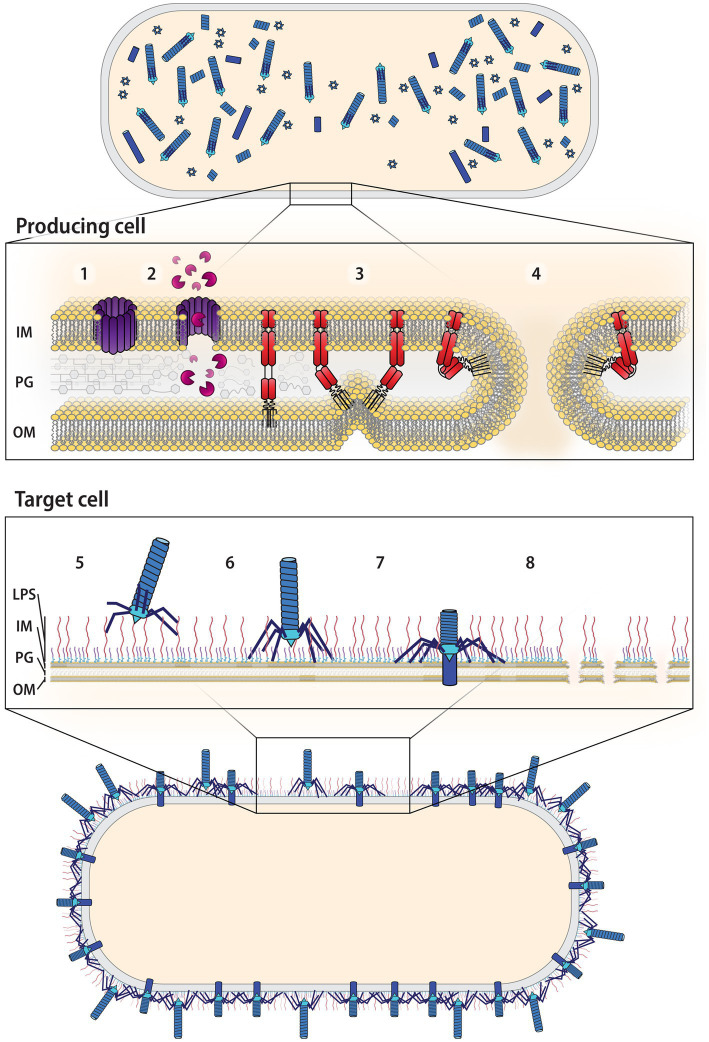Figure 5.
Overview of R-tailocin production up to killing the target cell. Following induction by a stress factor, R-tailocins are assembled in the cytoplasm of the producing cell. 1. Holins, also encoded by the same gene cluster as R-tailocins, will accumulate on the inside of the inner membrane (IM) of the producing cell and form pores. 2. These pores will permit the passage of lysins, also encoded by the R-tailocin gene cluster that will degrade the peptidoglycan (PG) layer. 3. Spanins will fuse the outer membrane (OM) to the inner membrane. 4. This will rupture the membrane, resulting in the explosive lysis of the producing cell and the release of the R-tailocins into the environment. 5. The R-tailocins will precisely recognize a target cell through their tail fibers that will bind to distinct cell surface decorations, specifically the O-antigens of the lipopolysaccharides (LPS). 6. Once the target is recognized, the R-tailocin will attach to the surface of the target cell. 7. The R-tailocin sheath will contract and push the tube through the membrane of the target. 8. The accumulated action of multiple R-tailocins will lead to the lysis and death of the target cell.

